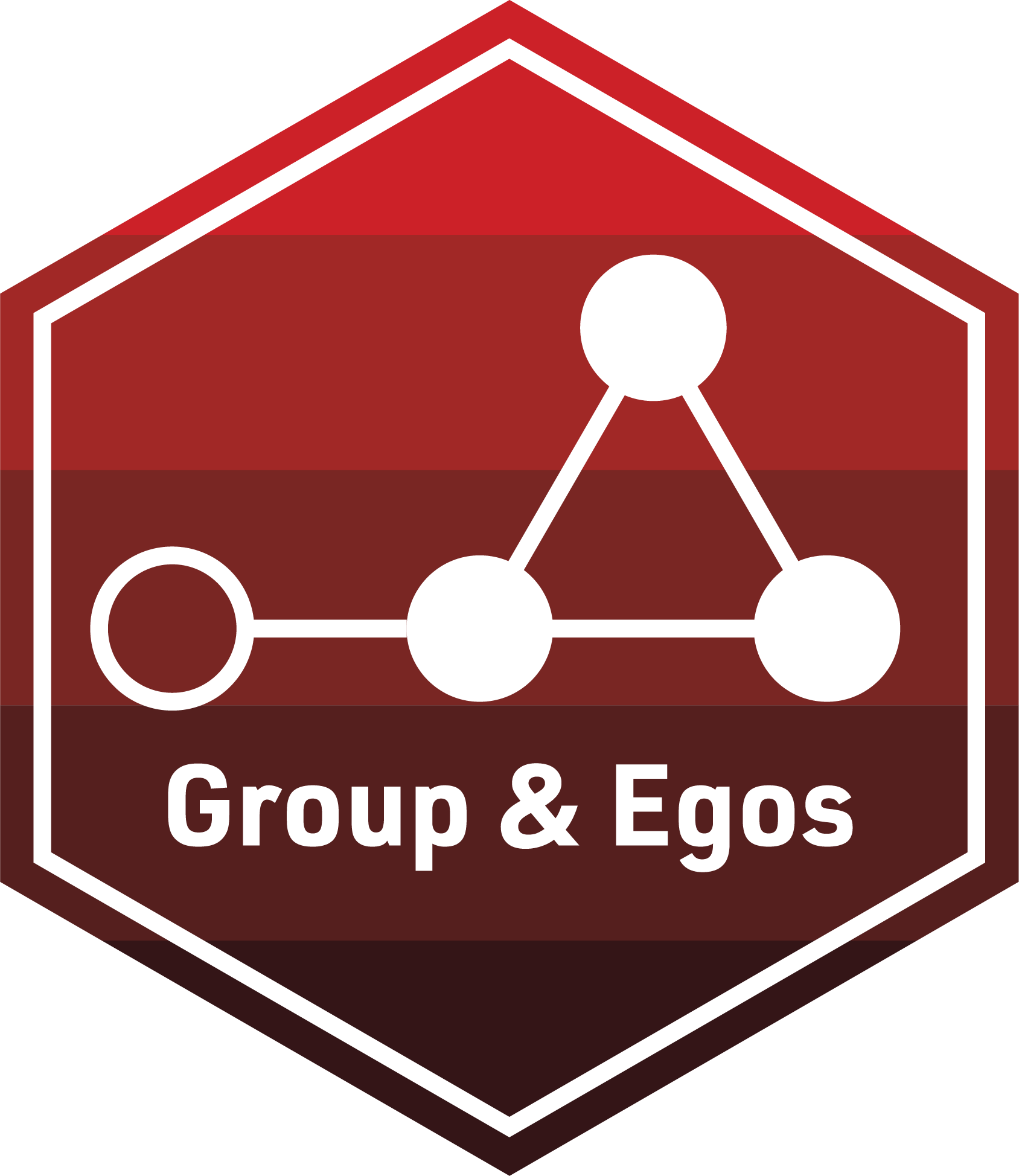# YOUR FINAL R CODE HEREGroups & Egos Badge
SNA Module 3: Badge

The final activity for each learning module provides space to work with data and to reflect on how the concepts and techniques introduced in each module might apply to your own research.
To earn a badge for each module, you are required to respond to a set of prompts for two parts:
In Part I, you will reflect on your understanding of key concepts addressed in the case study and essential readings and begin to think about potential next steps for your own study.
In Part II, you will create a simple data product in R that demonstrates your ability to apply a data analysis technique introduced in this learning module.
Part I: Reflect and Plan
Use your institutional library, Google Scholar, or search engine of your choice to locate a research article, presentation, or resource that applies social network analysis to an educational context or topic of interest. More specifically, locate a network study that makes use of group, positional, or egocentric analysis. You are also welcome to select one of the research papers listed in the essential readings that may have piqued your interest.
Provide an APA citation for your selected study.
What research questions were the authors of this study trying to address and why did they consider these questions important?
How was group, positional, or egocentric analysis used in this study to address these research questions?
What were the results of these analyses?
Think about a network that you are a part of, or may be interested in studying, and answer the following questions:
What is a research question that you might ask about this network that would require group, positional, or egocentric analysis?
Which approach or approaches would you use to answer this question?
What measures would you collected as part of your analysis? Why?
Part II: Data Product
Using one of the datasets provided in the data folder, create a polished table, chart, and/or sociogram that highlights a network’s groups and/or key actors. For example, you may be interested in examining the characteristics of central actors that emerged in the Massively Open Online Courses for Educators (MOOC-Eds) using dlt1-edges and dlt1-nodes datasets that were introduced in Module 2.
Alternatively, you may use your own data set to explore groups or central actors using the techniques demonstrated in the guided practice.
I highly recommend creating a new R or Python script to complete this task. When your code is ready to share, use the appropriate code chunk below to share the all the code necessary to reproduce your analysis and create your data product.
# YOUR FINAL Python CODE HERENarrative
- WRITE A BRIEF NARRATIVE OF YOUR ANALYSIS HERE
To receive your SNA Badge, you will need to render this document and publish via a method designated by your instructor such as: Quarto Pub, Posit Cloud, RPubs , GitHub Pages, or other methods. Once you have shared a link to you published document with your instructor and they have reviewed your work, you will be provided a physical or digital version of the badge pictured at the top of this document!
If you have any questions about this badge, or run into any technical issues, don’t hesitate to contact your instructor.